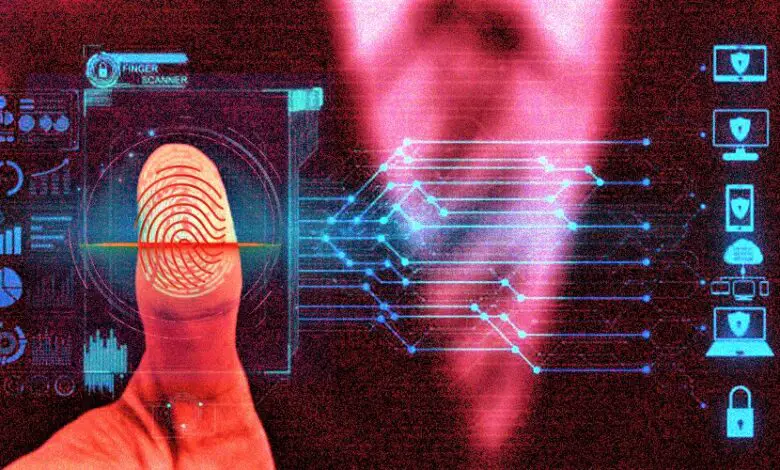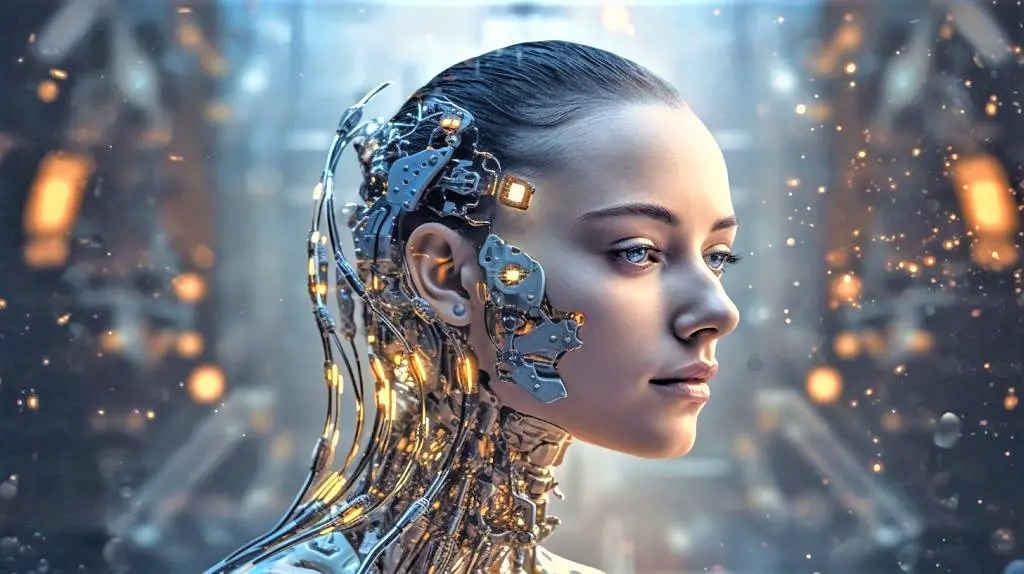Top Trending Technology in 2023 Where Biometrics is Inevitable
Biometric access control trends to look out for in 2023

Biometrics: Identity verification has changed thanks to AI-driven biometrics. AI algorithms support enhanced facial recognition, liveness detection, voice analysis, and fingerprint recognition, ensuring accuracy and security. While behavioral biometrics provide seamless authentication, multimodal fusion combines different biometric techniques. There are difficulties with bias, privacy, and data security.

The rapid advancement of artificial intelligence (AI) technologies has brought about a paradigm shift in various industries, including biometrics. Biometrics, the science of identifying individuals based on unique physiological and behavioral characteristics, has evolved significantly with the integration of AI. This synergy has paved the way for highly accurate and secure identification and authentication processes. In this article, we will delve into the latest AI-driven biometric technologies that are revolutionizing the field.
Facial Recognition Enhanced by AI
Facial recognition technology has made remarkable strides in recent years, thanks to AI. Deep learning algorithms, a subset of AI, enable facial recognition systems to learn and distinguish intricate facial features. These systems can analyze facial characteristics such as the distance between the eyes, the shape of the nose, and the contours of the face, allowing for highly accurate identity verification.
One of the latest advancements in AI-enhanced facial recognition is “liveness detection.” AI algorithms can now distinguish between real faces and spoofed images or videos by analyzing subtle cues such as blinking, head movement, and changes in skin texture. This technology significantly enhances the security of facial recognition systems and makes them more resistant to fraudulent attempts.
Voice and Speech Recognition
AI-driven voice and speech recognition have also emerged as key players in the biometrics landscape. Voice recognition systems use AI to analyze vocal patterns, pitch, tone, and other unique voice characteristics to verify an individual’s identity. These systems can be employed for secure access to devices, applications, and even financial transactions.
Furthermore, AI-powered speech recognition technologies can discern not only the words spoken but also the emotional nuances and contextual cues in the speaker’s voice. This has opened doors to applications such as sentiment analysis and emotion detection, which have potential applications in customer service, mental health assessment, and law enforcement.
Fingerprint Recognition Reinvented
Fingerprint recognition has long been a staple of biometric authentication, but AI has injected new life into this technology. AI algorithms can now process and match fingerprint patterns with exceptional speed and accuracy, significantly reducing false positives and false negatives. Additionally, AI enables systems to adapt to changes in fingerprint patterns due to factors such as aging or minor injuries, ensuring reliable authentication over time.
Multimodal Biometrics Fusion
AI has facilitated the integration of multiple biometric modalities, creating stronger and more robust identification systems. Combining technologies such as facial recognition, fingerprint recognition, and voice recognition enhances security by creating a comprehensive profile of an individual. This fusion of modalities mitigates the limitations of individual biometric methods and increases the accuracy of identification.
Behavioral Biometrics Revolution
Behavioral biometrics focus on unique behavioral patterns such as typing speed, mouse movement, gait analysis, and even smartphone usage habits. AI-powered behavioral biometrics can continuously analyze these patterns to authenticate users without requiring explicit actions like fingerprint scans or passwords. This “invisible” biometric technology adds an extra layer of security and convenience, especially in scenarios where overt authentication methods may be impractical.
Challenges and Considerations
While the integration of AI and biometrics holds immense promise, several challenges and considerations must be addressed. Privacy concerns, data security, and potential bias in AI algorithms are critical issues that require careful attention. Striking a balance between convenience and user privacy is essential to ensure the widespread adoption and acceptance of AI-driven biometric technologies.

Conclusion
The marriage of AI and biometrics has ushered in a new era of secure and efficient identity verification and authentication. From facial recognition with liveness detection to voice and speech analysis, fingerprint recognition, multimodal fusion, and behavioral biometrics, AI is reshaping the landscape of biometric technologies. As these technologies continue to evolve, stakeholders must collaborate to address challenges and harness the full potential of AI-driven biometrics while upholding privacy and security standards. The future holds exciting prospects for a world where individuals can interact with devices and systems seamlessly, knowing that their identities are safeguarded by cutting-edge AI-powered biometric solutions.
FAQs
What is biometrics and how is AI enhancing it?
Biometrics involves identifying individuals based on unique physiological or behavioral characteristics, such as fingerprints, facial features, and voice patterns. AI enhances biometrics by using advanced algorithms to analyze and interpret these characteristics, improving accuracy and security in identification and authentication processes.
How does AI-powered facial recognition work?
AI-powered facial recognition uses deep learning algorithms to analyze and identify intricate facial features. These algorithms can measure distances between key points on the face, recognize facial contours, and even detect liveness cues like blinking and head movement, making it highly accurate and resistant to spoofing.
What is liveness detection, and why is it important in biometrics?
Liveness detection is the ability of biometric systems to differentiate between real faces and fake images or videos. AI-driven liveness detection analyzes subtle cues like blinking and skin texture changes to prevent fraudulent attempts and enhance the security of facial recognition systems.
How does AI enhance voice and speech recognition?
AI in voice and speech recognition analyzes unique vocal patterns, pitch, tone, and other voice characteristics. This technology can be used to securely access devices, and applications, and conduct transactions. AI can also detect emotional nuances and contextual cues, enabling applications like sentiment analysis and emotion detection.
What advancements has AI brought to fingerprint recognition?
AI-powered fingerprint recognition processes and matches fingerprint patterns quickly and accurately, reducing false positives and negatives. Additionally, AI enables systems to adapt to changes in fingerprint patterns over time due to factors like aging, ensuring consistent and reliable authentication.
How does multimodal biometrics fusion improve identification systems?
Multimodal biometrics fusion combines different biometric modalities, such as facial recognition, fingerprint recognition, and voice recognition, to create a comprehensive and robust individual profile. This integration enhances security and accuracy by overcoming the limitations of individual biometric methods.
What are behavioral biometrics, and how does AI play a role?
Behavioral biometrics analyze unique behavioral patterns, such as typing speed, mouse movement, and smartphone usage habits. AI-driven behavioral biometrics continuously monitor these patterns for authentication, adding an extra layer of security and convenience, especially in scenarios where overt methods may not be feasible.
What challenges are associated with AI-driven biometrics?
Privacy concerns, data security, and potential bias in AI algorithms are significant challenges in AI-driven biometrics. Striking a balance between user convenience and privacy is crucial to ensure widespread adoption while upholding ethical and security standards.
How can AI-powered biometrics impact our daily lives?
AI-powered biometrics can streamline authentication processes in various sectors, such as banking, healthcare, travel, and access control. It can offer seamless and secure user experiences, reducing the need for traditional authentication methods like passwords and PINs.
What does the future hold for AI and biometrics?
The future of AI and biometrics is promising, with ongoing advancements expected in accuracy, security, and convenience. As technology evolves, stakeholders must collaborate to address challenges and ensure responsible development, enabling a future where individuals can interact with devices and systems securely and effortlessly.



